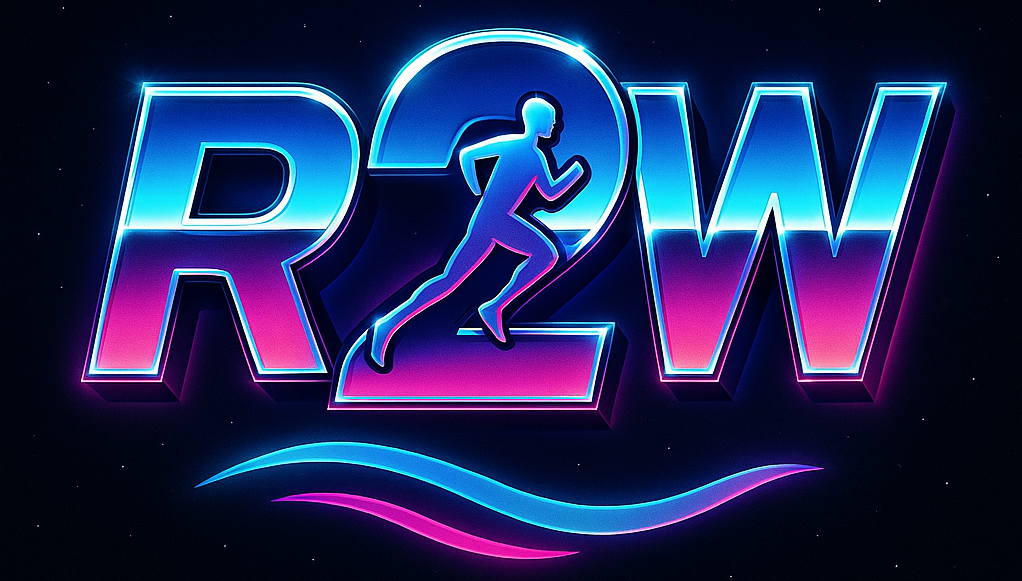 Most runners know that clocking personal bests can be both satisfying and frustrating. I’ve run half marathons and full marathons, and long runs generally come easy. Yet, when I switch gears to a 5K or even a 10K, picking up the pace is a real head-scratcher. If you’ve ever asked yourself, “Why can I run long distances comfortably but struggle with speed?” you’re not alone.
Most runners know that clocking personal bests can be both satisfying and frustrating. I’ve run half marathons and full marathons, and long runs generally come easy. Yet, when I switch gears to a 5K or even a 10K, picking up the pace is a real head-scratcher. If you’ve ever asked yourself, “Why can I run long distances comfortably but struggle with speed?” you’re not alone.
Many well-trained distance athletes face this exact challenge. It turns out that training for endurance and training for speed require a mix of similar dedication but different approaches. In this guide, I share insights from my own running experiences along with tips from experienced coaches. If you’re looking to crush your personal bests and run faster, I hope these ideas help you break through your current limits.
Step 1: Understanding the Speed-Endurance Paradox
As a seasoned runner, I discovered that long runs and speed work push different boundaries. Long runs are usually done at a pace near what some coaches call the lactate threshold or lactate inflection point. This pace is comfortably hard, meaning you’re working but not at your maximum effort. It’s sustainable for long periods. However, when you switch to shorter races like the 5K, you’re expected to run close to your VO2 max, which represents about 95% of your maximum aerobic capacity.
This effort level is intense and feels almost like an all-out sprint for most of the race. This sudden jump in exertion can be intimidating—especially if your training has focused mainly on endurance. Recognizing the difference between these two zones is the first step in adapting your workouts to improve speed efficiently and safely.
Key Concepts to Know:
- Your lactate threshold is the intensity where lactate starts accumulating in your blood faster than your body can remove it.
- VO2 max is the maximum volume of oxygen your body can consume, a key factor when pushing speed boundaries.
- Endurance training works primarily on slow-twitch muscle fibers, whereas speed relies on fast-twitch fibers.
Understanding the gap between these two physiological zones is the first step to modifying your training approach for improved speed.
Step 2: Embrace High-Intensity Interval Training (HIIT)
One explanation for the difficulty in achieving faster speeds is the lack of high-intensity training. While long, consistent runs build endurance, they don’t sufficiently challenge the fast-twitch muscles required for speed. High-intensity interval training (HIIT) is designed to push you to work near your maximum capacity in bursts, followed by short recovery periods.
How HIIT Helps:
- It recruits fast-twitch muscle fibers that haven’t been fully activated by routine long runs.
- Short, explosive efforts challenge both your aerobic and anaerobic systems, priming your body for faster speeds.
- It conditions your heart to work at higher intensities, gradually increasing overall speed endurance.
Incorporate HIIT sessions into your training plan once or twice a week. Start with short intervals—maybe 30-second sprints followed by one to two minutes of recovery—and watch your speed improve over time.
Step 3: Build Strength with Targeted Training
A fine balance exists between running fast and preventing injuries. Strength training can help you achieve this balance. As a runner, I’ve learned that supplementing running with targeted strength exercises not only builds resilience but also boosts performance in shorter races.
Focus Areas in Strength Training:
- Leg Strength: Exercises like squats and lunges improve force production with every stride.
- Core Stability: A strong core aids in maintaining proper form, especially when fatigue sets in during faster efforts.
- Explosive Movements: Incorporate moves such as kettlebell swings and step-ups to condition your muscles for quick, powerful strides.
Using a mix of these exercises in your routine can lead to more explosive, efficient running form. Over time, you’ll notice that your strides become longer and more dynamic, making it easier to hit faster paces during races.
Step 4: Add Plyometrics for Explosive Power
Explosive power is key when transitioning from long, comfortable paces to high-speed races. Plyometrics, which include drills like skipping, bounding, and box jumps, condition your muscles to generate quick bursts of energy and improve your running form.
Benefits of Plyometrics:
- They strengthen fast-twitch muscle fibers that are otherwise underutilized during prolonged runs.
- Plyometric drills help you achieve a longer flight, or float, phase between strides, which can contribute to increased speed.
- Regular plyometrics can boost overall running economy, meaning you’ll use energy more efficiently even when pushing harder.
You don’t have to overdo plyometrics—a few minutes after your warm-up on speed days can introduce a new stimulus to your muscles and improve overall performance. Recent studies have shown that short daily hopping sessions can even improve running economy in amateur athletes.
Step 5: Mix in Race Pace and Hill Workouts
Speed improvement is also about getting comfortable with maintaining a faster cadence during your run. Race pace workouts push you to familiarize yourself with the pace you need for competitive events, while hill workouts add resistance, further building your strength and speed endurance.
Race Pace Workouts:
- Start with intervals at your goal race pace, interspersed with recovery periods.
- These sessions teach your body to handle the discomfort of high intensity for short distances.
- Gradually increase the length or number of intervals as your body adapts.
Hill Training:
- Hill sprints provide natural resistance and mimic the action of fast running with added force.
- Consider running on moderate, consistent hills once a week to integrate strength training without overloading your muscles.
- If outdoor hills aren’t available, a treadmill set to an incline works just as well.
The combination of race pace intervals and hill repeats not only conditions your cardiovascular system but also builds the muscle strength required to sustain speed over a race.
Step 6: Prioritize Recovery and Adaptation
A lesser-discussed yet important aspect of running faster is recovery. My own training has taught me that rest and recovery aren’t just for preventing injuries; they are vital for performance gains, particularly when you’re introducing high-intensity workouts into your regimen.
Effective Recovery Strategies:
- Active Recovery: Light jogging, walking, or cycling on off days can help maintain circulation without stressing your muscles too much.
- Stretching: Consistent stretching can reduce muscle tightness and improve overall flexibility.
- Nutrition and Hydration: Fueling your body with the right nutrients and staying hydrated aids in muscle repair and energy restoration.
Incorporate recovery days into your training plan, and listen to your body. Sometimes, the best training day is the one where you rest and allow your system to rebuild stronger than before.
Step 7: Surprise Your Body with Variability
One common oversight among runners, including myself, is sticking too rigidly to one type of workout. Surprise your body by varying the training intensity, distance, and even the terrain. This variability is important to avoid stagnation and further boost your speed.
Why Variety Works:
- Changing up your routine prevents your muscles from getting too comfortable with a single kind of effort.
- Small adjustments in distance, tempo, or even the route can offer a novel challenge without the risk of overtraining.
- These adjustments keep your mind engaged, making training both enjoyable and productive.
Start by altering one or two variables at a time—perhaps by switching the order of your workouts or integrating a new drill. This approach ensures that the changes are manageable and your body has the chance to adapt gradually.
Extra Tips: Mental Strategies and Motivation
Speed improvement is not solely a matter of physical training; the mind plays a very important role. By building mental toughness, you can overcome the hurdles that come with pushing your limits. Techniques like mindfulness, visualization, and setting specific mini-goals during your workout sessions can help keep you focused and motivated. It is really important to take time to plan your training sessions thoughtfully and to embrace both the setbacks and successes along the way. Remind yourself that every training day offers a new opportunity to learn and adjust. Keep an eye out for the small victories because they add up over time.
Also, surrounding yourself with a supportive community of runners and coaches can provide encouragement when you feel challenged the most. Try to set aside a moment after every workout to reflect on what went well and what could be improved. This ongoing reflection can help you make small, effective changes that accumulate into bigger improvements, ultimately propelling you toward your speed goals.
Common Questions & Troubleshooting
Why can’t my speed match my endurance?
Many experienced distance runners struggle with this transition. Training predominantly for endurance can leave fast-twitch muscle fibers underdeveloped. The solution lies in incorporating more high-intensity work, strength training, and plyometrics into your routine gradually.
What if I feel too fatigued after adding speed work?
If speed sessions leave you overly tired, it may be a sign that you’re pushing too hard too soon. Ease into these workouts and allow extra recovery time. Adjusting the duration and intensity of intervals is key. Consistency and gradual progress will help your body steadily adapt.
How do I avoid injury while increasing intensity?
Balancing intensity with recovery is very important. Incorporate strength and flexibility exercises into your routine, warm up thoroughly before high-intensity sessions, and listen to your body’s signals. If you experience persistent pain, consider consulting a coach or sports professional to adjust your training plan.
Final Thoughts & Next Steps
Improving speed isn’t just about running faster. It’s about smart training that challenges your body in new ways, whether through high-intensity intervals, targeted strength work, or specialized drills. Understanding the differences between endurance and speed, and then applying the right mix of training methods, can help you overcome performance plateaus.
If you’re thinking, “I crush long runs like it’s nothing, so why not tap into my speed potential?” then this could be the switch you need. It’s encouraging to know that even well-trained athletes face these challenges, and with a bit of adjustment and the right strategy, faster times are well within reach.
Your Action Plan:
- Mix one or two HIIT sessions into your weekly routine if they aren’t already part of your training.
- Add targeted strength training and plyometric drills to push your muscles to generate more explosive power.
- Start incorporating race pace intervals and hill workouts, gradually increasing intensity as your body adapts.
- Prioritize recovery with activities like light jogging, proper stretching, and balanced nutrition to keep injuries at bay.
- Introduce small variations into your routines to keep both your muscles and mind engaged.
The adventure to crushing your personal bests is a mix of smart planning and listening to your body. What small change are you willing to try tomorrow to work toward a faster pace? Take some time to reflect on these steps and tweak your training until you find what fits best with your goals.

